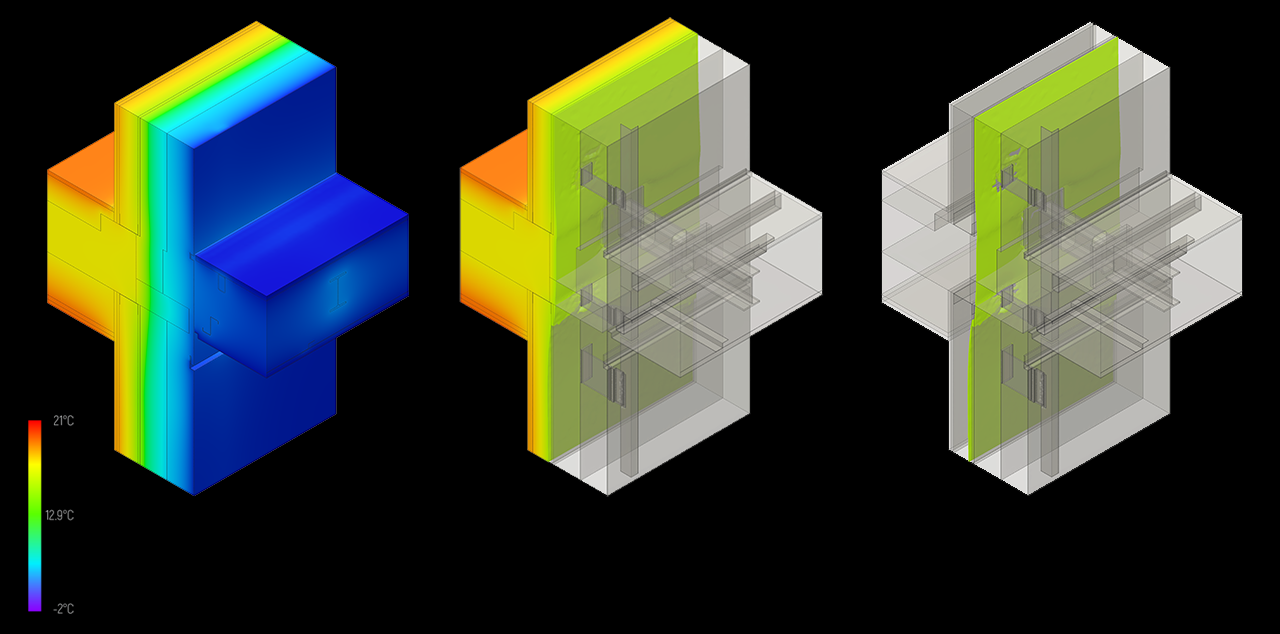Building Physics
Our team of experienced building physicists possesses a wealth of expertise in conducting thermal performance analysis for a range of façade systems, from straightforward building up walls to sophisticated unitized curtain walls and precast concrete façades. In collaboration with our in-house software development team, we are creating an online U-value calculator designed for ease of use by professionals such as architects, project managers, and estimators who may not possess a comprehensive understanding of technical aspects. This calculator is compatible with commonly used façade systems and provides a comprehensive and detailed illustration of the wall build-up, ensuring that desired thermal performance and external wall thickness are achieved.
In close collaboration with our software development team our engineers are developing to online U-value calculator. We designed it so that is easy to use for architects, estimators, project managers, quantity surveyors and estimators, who may not have in depth technical knowledge. The calculator works with most commonly used façade systems and generates detailed build-up of the wall which achieves the desired thermal performance and thickness of the external wall.
As specialists in complex façade assemblies, our team of experienced building physicists employs a comprehensive approach to analysing the thermal performance of the building envelope. Utilizing finite element analysis, we meticulously assess all interfaces and provide a detailed report on the area-weighted U-value of the building envelope. This in-depth analysis allows us to accurately evaluate and optimize the thermal performance of the building, ensuring that it meets the desired standards and requirements.
Our conventional condensation risk analysis method provides a thorough examination of linear interfaces, including window reveals, façade system abutments, and balconies, to ensure compliance with the requirements of local normative documents and project-specific warranties. This evaluation process helps us to verify that the building envelope meets the necessary boundary conditions and to reduce the risk of condensation issues in the future. Our experienced building physicists utilize industry-standard techniques and tools to carry out these analyses, ensuring that our clients receive accurate and reliable results.
To ensure the overall thermal performance of the building envelope is not compromised, our engineers perform a three-dimensional condensation risk analysis for isolated thermal bridges such as structural elements, service penetrations, and isolated brackets. This analysis helps to generate dew-point surfaces, which can reveal potential areas of moisture buildup within the envelope. This is a crucial step in the design process as it allows us to identify and resolve any potential issues related to condensation, thereby ensuring the building envelope meets local normative documents and project-specific warranty requirements.






